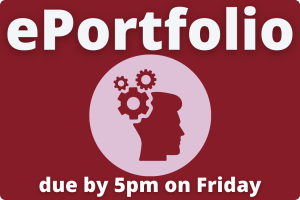Unit 4: Empowering Bystanders Against Anti-Black Racism
Week 11 – Day 2 – Hope and Care
 Today is a LIVE class day! We will be meeting in our Virtual Classroom on Blackboard. See you there!
Today is a LIVE class day! We will be meeting in our Virtual Classroom on Blackboard. See you there!
Today we will review the 5Ds of bystander intervention and explore how to apply these ideas in real-world situations. You will have an opportunity to discuss as a large group and in small groups, as you work through a series of scenarios.
Required Assessment!

This week you are asked to complete your final ePortfolio submission.
ePortfolio: Hope and Care (6%)
Youth advocates and practitioners are promoting a shift to healing centered engagement (HCE), “an approach that is akin to the South African term “Ubuntu” meaning that humanness is found through our interdependence, collective engagement, and service to others.” (Ginwright, 2018). This submission asks students to consider how we might go about addressing the root causes of racial trauma in Canada for example, rethinking the policies and practices that create the environmental contexts that cause harm in the first place (i.e., in workplaces, in classrooms, at the doctor’s office). In other words, how do we intentionally foster well-being? In exploring this context, learners may want to address the following questions:
- How can post-secondary educational settings enhance conditions that contribute to well-being?
- What role does collective action play in positive racial identity formation and collective healing?
- What role does culture play in positive racial identity and collective healing?
- What role does spirituality play in positive racial identity and collective healing?
- Why is it important to highlight the ways in which racial trauma and healing are experienced collectively?
- How is healing from racial trauma found in an awareness and actions that address the conditions that created the trauma in the first place?
- Is building awareness of anti-Black racism sufficient to contribute to overall wellbeing, hopefulness, and optimism? Or is more action needed to create healing? What kinds of action?
How does social advocacy contribute to a sense of purpose, power, and control over life situations? How does this advance well-being and healing?


